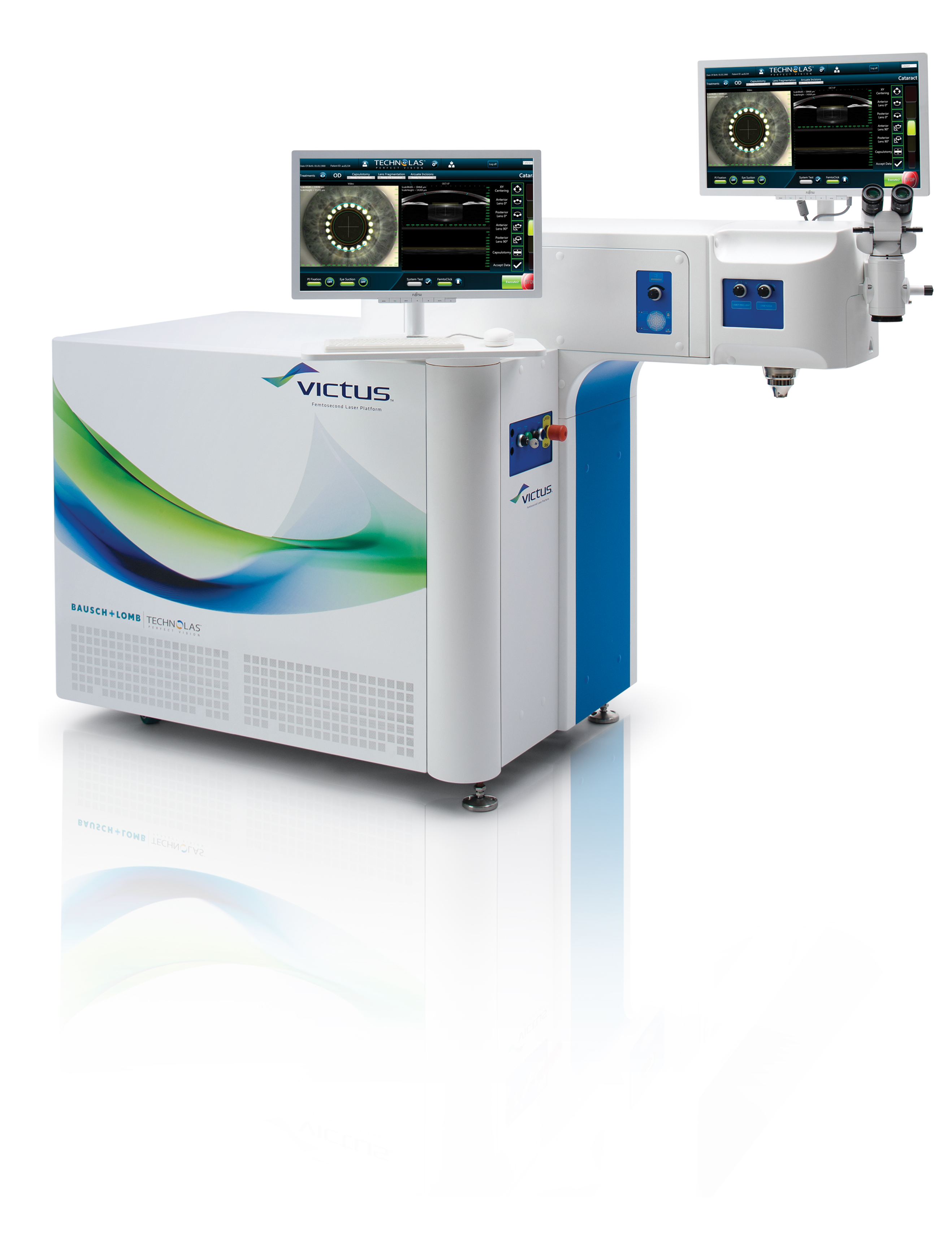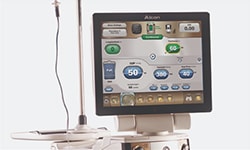Editorially Independent Content
For cataract and refractive cataract surgery, the Victus Femtosecond Laser Platform (Bausch + Lomb) provides ultra-fast pulse rates of laser for laser-assisted capsulotomies and lens fragmentation, among other applications. When pre-treated with the Victus, using a variety of lens fragmentation patterns, dense cataracts may require less phaco energy for removal.
Laser-assisted Lens Fragmentation
I use the Victus Femtosecond Laser Platform in combination with the Stellaris Vision Enhancement System, which provides phacoemulsification for microincisional surgery.
To soften the lens using the Victus, I can use a combination of fragmentation patterns, such as cylindrical cuts in the middle similar to a bulls-eye and radial cuts.
After the lens has been pre-treated by the Victus laser, we only need short pulses of phaco using the Stellaris.
Less Phaco Energy Needed
Since the Stellaris is a dual-linear vacuum-driven system, very little phaco energy is needed because the vacuum is so efficient. But when you throw laser into the mix, you find that, since the cataract is so soft, you usually only need tiny bursts of phaco followed by vacuum.
In one recent surgical case, the Victus really softened up a 3NS cataract, making it easy to just pass through it, and to get down deep enough to crack it in half and then into quadrants.
The capsulotomy was completely free and all I had to do is go in and grab it, move it around a little bit and make sure there were no adhesions. I added a little viscoelastic before hydro dissecting. When we went under the edge of the capsule, we could see a nice fluid wave, and I made sure the lens could spin easily.
In eyes that have been treated with the femto, there’s been a hydro dissection, almost like a pneumo-hydro dissection, from the gas bubbles that are created by the laser energy. This makes it very easy to mobilize the nucleus and spin it.
Easier Phacoemulsification
Using the Stellaris, you only need to use phaco energy when the tip is occluded, and that’s just to break up the occlusion and let the particles flow into the tip. With a Bimanual technique you can also bring the phaco needle back all the way toward the wound and near the subincisional space where nuclear particles can be trapped. In coaxial phaco, if you tried to do that, your irrigation would be trapped in the wound and the chamber would collapse.
But by separating the irrigation, you can work much more freely, closer to the wound, without collapsing the chamber and with much lower risk of capsular tears. The chamber stays very stable and deep with a bimanual approach. Again, we were able to keep the iris down and back, separating irrigation from aspiration. By separating the two, everything becomes predictable and controllable, which translates into safer surgery.






